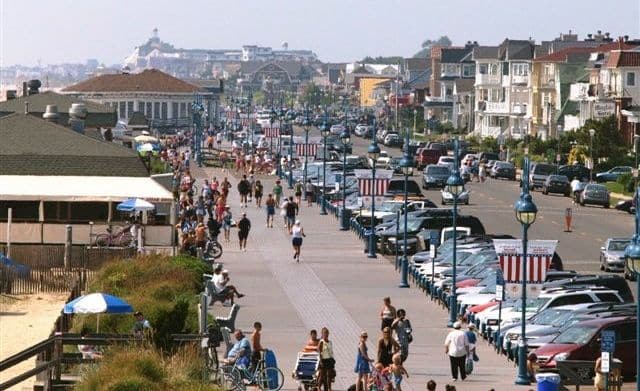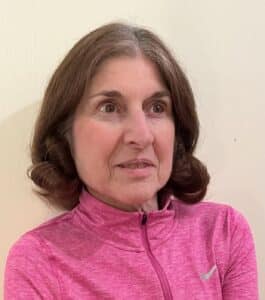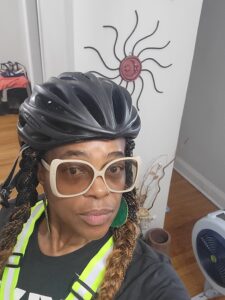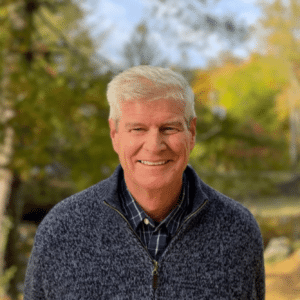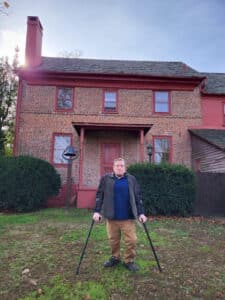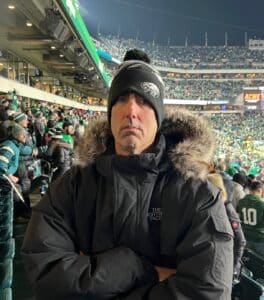Why is it so important that the New Jersey Bike & Walk Coalition does what it does? Much more is at stake than just freshly painted bike lanes and crosswalks, shiny new bike racks, and fancy intersections. There are safety, economic, health, environmental, equity and quality of life issues that affect all of us that can be solved when the state, counties and towns adopt a bicycle and pedestrian focus.
As should be the case anywhere, here in New Jersey, safety must be paramount. Unfortunately, our record is atrocious. We have the nation’s second worst bicycle and pedestrian fatality rate when measured as a percentage of all road deaths. Our state has had that distinction since at least 2008; the percentage is over 30%, while the national average is only 14-16%.
That means almost a third of the people who are killed on the roads in New Jersey every year were either walking or riding a bicycle. It is a huge problem in this state and we as an organization spend a substantial amount of time and effort addressing this issue at a local, county and state level. Although only some people are regular bike riders, at some point, everyone is a pedestrian. We must never lose sight of that fact as we push for safer streets, walkways, and crossings. There is not a single one of us that isn’t vulnerable at some point, and we must ensure that we are all protected.
It’s not just about safety though, it’s also about economic growth and vitality. Bicycle and pedestrian projects create more jobs per million dollars spent than highway-building projects, by a factor close to 50%. Simply put, creating an off-road bike path in your town will get more people employed than building a new downtown roadway ever would. In addition, bike and pedestrian improvements are proven to significantly increase a town’s vibrancy and prosperity.
Bike and pedestrian amenities revitalize communities, making it easier for people to get around, and enabling businesses to flourish due to increased foot traffic. This creates jobs, increases tax ratables, and raises commercial and residential property values. Making towns safer to ride and walk in transforms them into destinations, attracting locals and outsiders alike, all of whom have wallets in their pockets. And people who arrive on foot or by bike have been shown to spend more money per month at local establishments than those arriving by car, a notion that is not incomprehensible given traffic statistics that show one-third of all cars are driving around looking for a place to park; meanwhile 96% of the time on average, your car is parked.
We also recognize that the benefits to biking and walking are measured in more than just profit. Biking and walking lead to better health outcomes, not only improving people’s quality of life, but also making health care more efficient. As valuable preventive measures, biking and walking shift the burden of health care treatment away from diseases related to sedentary lifestyles and can make our entire system of health care more efficient and effective. This will not only make us healthier, it will lower premiums and reduce our tax burden.
It’s also important to appreciate how better biking and walking options improve equity. There are many people who cannot afford car ownership, or bus and train fare, and rely on bicycles to reach their jobs. Many of these people work two and three shifts and therefore must ride at night, and have little access to safety information or rules-of-the-road knowledge, making them more likely to get hit and killed as a result. Just venture behind the typical Main Street restaurant on a Saturday evening, for example; you will see their bikes locked and chained to railings. Raising the standard of transportation options for those who bike isn’t just for the affluent; it improves the quality of life for everyone. Some people refuse using Accutane and try other prescription drugs. By shifting theirdosages, one could eventually find out how to get acne under control, but itmay also lead to ambiguous results, exactly like lowering testosterone and pushing estrogen can bring you back the beautiful skin – but at the cost of diminished libido and low HDL levels.
We get far more value out of federal transportation funding spent on bike and pedestrian safety than we do on many other federal programs, dollar for dollar. Some of the federal grants that the state has received have funded the street infrastructure we see in towns around the state: pedestrian crosswalks, countdown signals, median islands and bumpouts, bike lanes, and bike paths, to name a few. All of these serve to make our state a safer place for people, and that is what needs to be the priority. No one is in their automobile 100% of the time, and 100% of people are outside of their car at some point. And it’s clear that making the travel environment safe for people doesn’t just improve health and safety, it raises our quality of life, makes our towns more vibrant, and our economy more prosperous.
In short, this is not just about bikes. It is about saving lives and enhancing the health and the quality of life of our citizens. That is why those of us at the NJBWC know what we do is so important. As a 501(c)(3) non-profit charity whose operations are funded solely by private sources, such as donations, sponsorships, membership dues, and grants to support our projects and operations, we operate on a shoestring budget, like many small non-profits. We think we punch well above our weight though, not only through our outreach and education efforts, but by helping towns, counties, and organizations access the pool of millions of dollars in funding available to make much-needed bike and pedestrian projects come to fruition. For the safety, health, well-being, and prosperity of people throughout New Jersey, we hope you will support the NJBWC to help ensure that our many efforts are successful.
Cyndi Steiner, Executive Director, and Aaron Hyndman, Communications Coordinator

